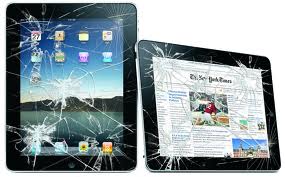How tablet economics suits your pocket
More and more people are using these portable devices to cut costs of their computing and telecom needs
Tablet computers’ arrival a couple of years ago has changed the way
people do the cost-benefit analysis behind their purchase of computing
and telecom devices. Tablets are an expenditure item for those who use
it for personal purposes. They are an investment for those using it for
work or managing their businesses.
People have begun looking at how much it costs to own a notebook
computer (or a desktop computer) and a smartphone and whether their
computing and telecom needs can be met at a lower price with tablets.
Tablets are the new workflow managers for professionals. Balwant, a
Hyderabad-based wedding photographer, recently bought a tablet with a
SIM-based phone feature for Rs 18,000, to use it as his secondary tool.
While his high-end professional camera does the primary job of capturing
the moments, he uses a tablet to plan, finalise the shoot and make a
presentation to clients. It also comes handy to email photos.
“The seven-inch screen is very helpful while showing pictures. At the
same time it is portable too,” he says. Earlier, he would carry the hard
copy of an album, then a laptop. Now he is using a tab to discuss work
with his clients. “Some clients ask for photos to be uploaded to their
Facebook or mail them to a friend even as the discussion is on,” he
says.
Three years ago, Balwant had bought a netbook for Rs 14,000. He spent
another Rs 4,000 on anti-virus software. With a 160 GB hard disk and one
GB Ram with an Atom processor, the netbook, with a 10-inch screen,
looked like a cool tool to him.
The seven to eight hour battery pack was good enough. He carried this to
wedding shoots to show sample images to the couple of the day. But with
this he also bought an external data dongle for Rs 1,500 for internet
connection. With his constant needs to mail photos and album layouts, he
spent about Rs 500 to Rs 750 a month for the data.
Recently, when Balwant looked to replace the ageing netbook, came in the
tablets. He bought a sleek-looking portable tablet. Now, he spends
about Rs 125 for 1 GB data of internet usage. With 3G, which is faster,
the cost is about Rs 250 for 1 GB data.
To meet demands from his clients for uploading sample photos to the
internet, instead of cameras with restricted functions of wifi, Balwant
is glad uses his tablet to click some photos on the tab and post them
online.
Peter Chang, regional head, South Asia and country manager, System
Business Group, ASUS India, says tablets are moving towards being a
necessity from being a luxury. There is traction at the entry to
mid-level priced tablets. “Tablets have filled the gap for a device that
is smaller than a laptop and bigger than a smart phone,” he says. “You
can use a tablet on the desk, play with it on the floor, in bed, on the
couch or in the car. Also, apps can handle special needs — language,
audio, video, colours,” he says.
Approximately, the price of SIM-enabled tablets starts from Rs 7,000
upwards, while notebooks cost more than Rs 20,000 and smartphones cost
more than Rs 6,000.
Among tablets, Samsung Galaxy Tab 2 is priced around Rs 15,500. It has a
screen resolution of 1024x600 pixels, a capacitative touch screen, 16
GB internal storage and 1 GB RAM. The memory is expandable. It has a 3
MP camera and can connect to the internet using 2G, 3G and wi-fi. The
Android 4 run dual core tablet has a 4,000 mAH battery and weighs 345
gm.
Asus has recently launched its Fonepad for Rs 15,999, this has phone
functionality. It has 8 GB internal memory and is expandalble to 32 GB.
It has 4,270 mAH battery. It has a wi-fi only variant Memopad that is
priced at Rs 9,999.
The sub-10k market has the most number of players. Though seven inch
screen in the key attraction, these players vie for your the attention
with other add-on offerings like a key board, cover, USB ports, head
phones and the like.
For instance, Zen Ultra Tab A100 is priced at Rs 5,999. It comes with a
800x400 pixel screen and has a 4 GB internal storage with a 512 MB RAM.
The notebook computers are pricey. For instance, an Intel second
generation Core i3, 2.3 Ghz with a 500 GB hard disk and a 2 GB DDR with
DOS and Intel HD graphics costs around Rs 24,500, while a Sony Vaio
(T14113) with Intel Core i 3 with 1.8 Ghz and 500 GB, Windows 8 and
Intel HD 4000 is priced at about Rs 49,000. From another maker, HP, its
HP Laptop Pavilion 14-B004TU with Intel Core i3 processor and on board
Intel Grahics is priced at Rs 35,500.
Clearly, therefore, the age of low-priced tablet computers has arrived. A
research report by Knowledgefaber, a consulting and research firm,
indicated that that tablet PC sales worldwide are likely to reach 388
million units in 2016, surpassing the combined sales of desktops,
laptops and ultrabooks in terms of volume, while revenues from tablet PC
sales are expected to multiply five times between 2012 and 2016.
krishnamohan
A Post From http://www.mydigitalfc.com/personal-finance/how-tablet-economics-suits-your-pocket-485








